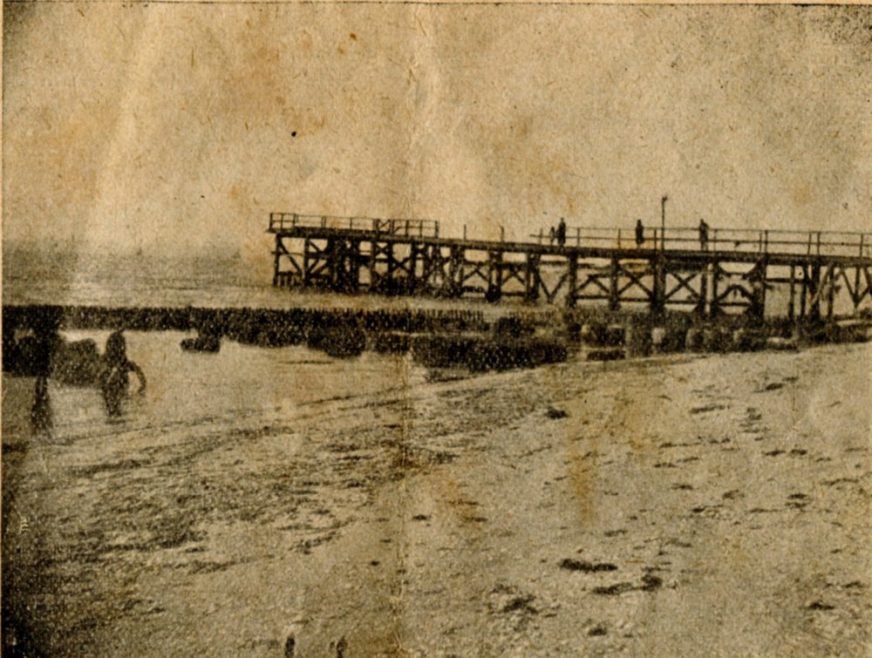
The Jetty
Unlike its neighbour, Southend, with its foreshore of black mud, Canvey has a beautiful natural shell and sand beach almost pounded into grit. At low tide shrimping on the Chapman sands is a very favourite amusement, the shrimps netted there possessing a fine and delicate flavour. The gathering of cockles, mussels, winkles, and even Portugese oysters—the spar of which was brought over by the Portugese—may be safely indulged in by the elders, while their merry youngsters with spade and pail are building fairy castles on the shore.
Restfulness is the key-note of Canvey, the air being both nerve-bracing and nerve-soothing. The jaded Londoner can repose on the shell beach, feeling “glad to be alive’ in such enchanting surroundings; listening, may-be, to the lark gaily carolling overhead, or, in watching/the redshank crying “Tlui, tlui, tlui,” as it swerves up to its greatest height; nevertheless we have no n____rs, no punch-and-judy shows, no entertainments of any kind for those seeking amusements of that sort. Bathing is perfectly safe from the bathing shelter erected a short distance from the jetty for that purpose, or, visitors may place their tents on the beach. The jetty, in its unfinished, unsafe state, is not “a thing of beauty,” but, when the railings are repaired, and the boarding secured—which we understand is shortly to be done— a walk to the top to see the shipping will well repay the most seasoned tourist for his trouble. The barrels of cement lying underneath were barged up from the wreck of the ” Benmohr,” at Hole Haven, to act as breakwaters.




No Comments
Add a comment about this page